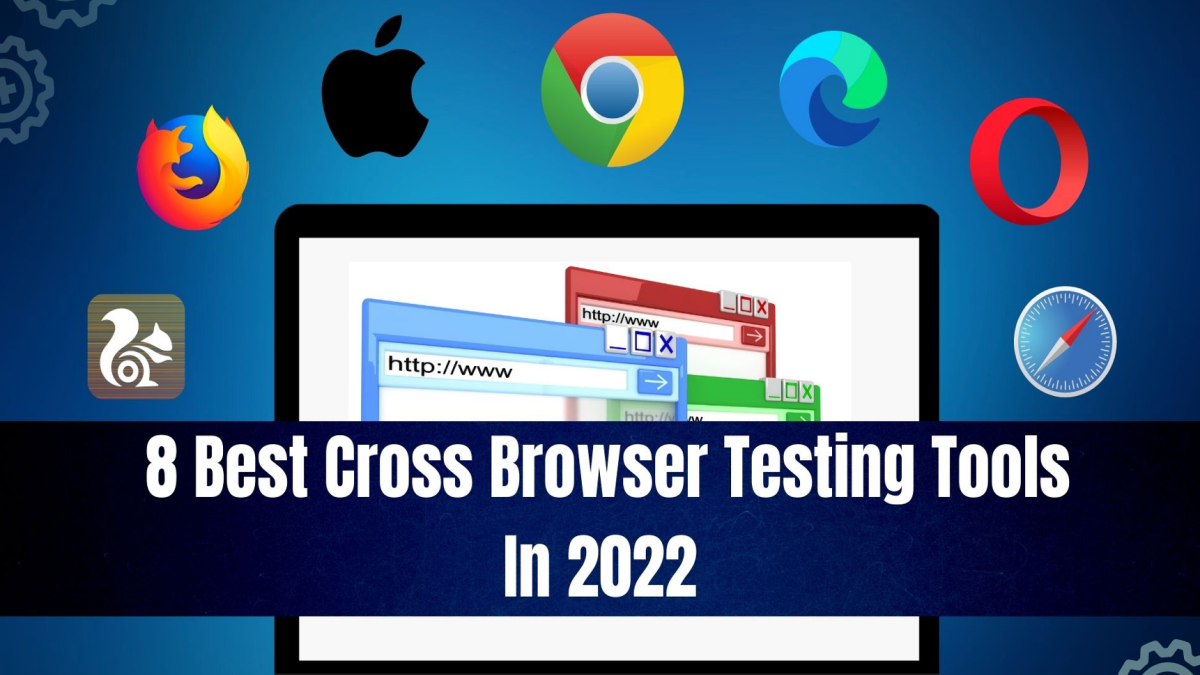
Cross-browser is a term used in web development that describes code that works the same in certain browsers. For instance, if a site or link is cross-browser compatible, it will work in multiple browsers. This article will dive into and brief about the 8 best cross browsing tools for 2022.
Table of Contents
What are Cross Browser Testing Tools
Designing a site that works across several web browsers isn’t an easy task. With modern technology, web browsers are intricately tied to the operating systems that run themselves. No matter what development language one uses, there will always be little differences between operating system to the operating system, rendering engine to rendering engine, etc.
One way of accomplishing it is to use a coding method that caters to incompatibilities between them. However, if this is not possible, then you will need to edit your code accordingly.
Cross-browser compatibility is very important for the smooth functioning of web applications.
For developers, cross-browser testing is a significant part of building a website – so that it looks the same across all devices with different screen sizes and characteristics. This category allows you to run cross-browser tests for free on our lab across Chrome, IE, Firefox, Safari, Edge, and others.
Some of the features that a prominent cross-browser testing tool should have include –
- Code validation
- Extreme performance capabilities
- Responsive design
- UI consistency
8 Best Cross Browser Testing Tools
Below is the list of the best cross browsing tool of 2022 –
1. TestGrid
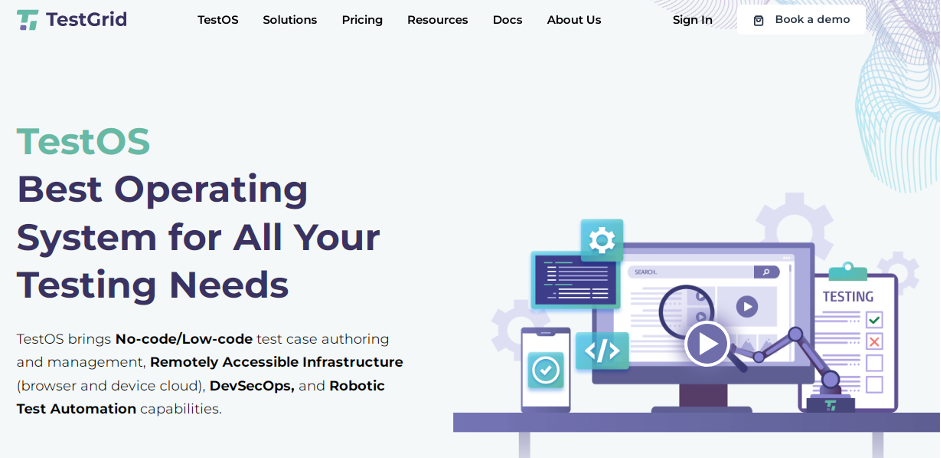
If you are looking to work with a flexible platform that has every slice of technology pie imaginable, look no further than TestGrid. Its revolutionary AI is something that will truly revolutionize how cross-browsing testing is performed around the globe. Now, all projects can be quickly developed and thoroughly tested, meaning there’s less chance an error will slip through.
Pros
- Faster results
- 100% scriptless
- Detailed reports and analytics
- Automated test cases creation
- Secure and keeps the tests stable across all browsers
Cons
- Devices that came before iOS9 are not supported
- Archives data automatically and send back the report every quarter
2. BrowserStack
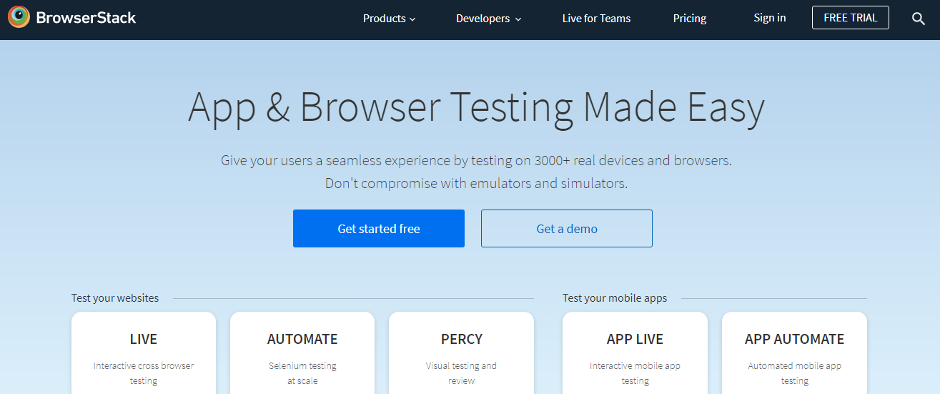
BrowserStack is like having a full-time DevOp expert in your pocket. It helps you test your website or app across 3000+ devices. Their virtual reality cloud collaboration software lets you run browser-based tests without needing to install anything on your computer.
Pros
- Processes effective cost-cutting
- Emulate actual desktop, mobile, tablet, and other devices platforms
Cons
- Highly expensive for the start-ups
- No free version or integration services are available
3. Perfecto
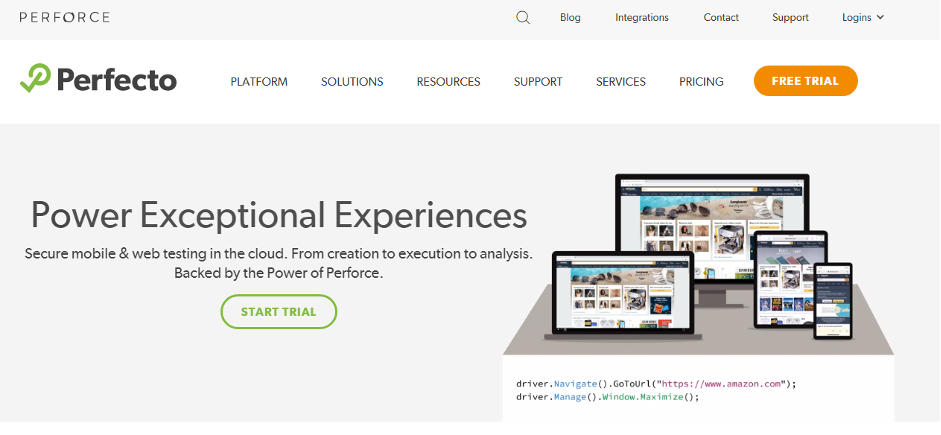
Perfecto offers a flexible and automated solution that provides access to real devices and simulators/emulators as well as browsers across multiple operating systems so that testers can complete parallel testing anywhere. Ideal for organizations with DevOps environments, Perfecto also features a powerful dashboard, distributed command execution options, and automatic asynchronous reporting capabilities to make quality assurance more efficient than ever.
Pros
- No external plug-ins required
- Detailed reports and result analytics
- AI maintenance available
Cons
- Limited test coverage
- Limited functionality in android and average with IoS
4. LambdaTest
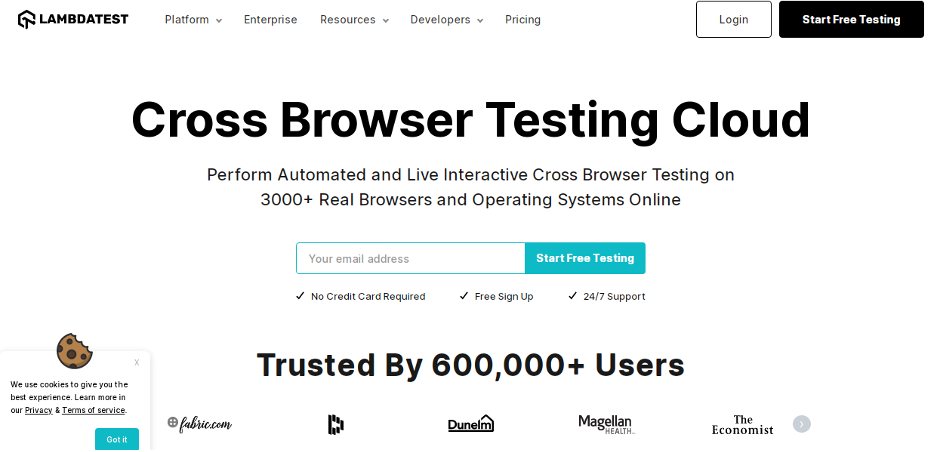
LambdaTest enables you to test your web app or website on real browsers without ever downloading or installing them on your local machine. You can run fully automated selenium scripts by writing them in one of the supported languages such as Python, Java, Ruby, PHP, and .NET against any browser package and operating system combinations.
Pros
- Accurate for app and web automation testing
- Easier integration with Jira and Slack
- 99.8% uptime SLA
- Good debugging experience
Cons
- No real devices supported
- No scriptless or low code test case writing for Web Apps
- No automated app testing available
- No visual testing available
- Limited native device features
5. SauceLabs
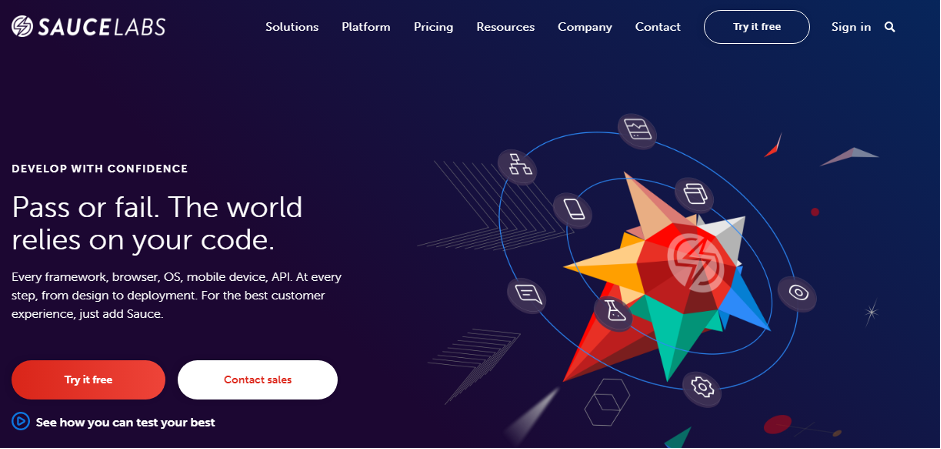
SauceLabs is the operating system of automated testing. For teams who have their automation mentors, they can install and integrate Sauce Lab with their preferred test framework. But most importantly, SauceLabs has been enhanced to allow for continuous integration workflows- flowing straight into your release processes- so that you can maximize your time benefit from automated software testing.
Pros
- Users can access the video without logging in to the dashboard
- Free trial is available,
- Provides integration services
Cons
- Longer execution time
- Slows down during regression testing
- On-premise browser cloud infrastructure not available
- Scriptless or Low code test case writing for Mobile Apps are not available
- Network level testing not available
6. Kobiton
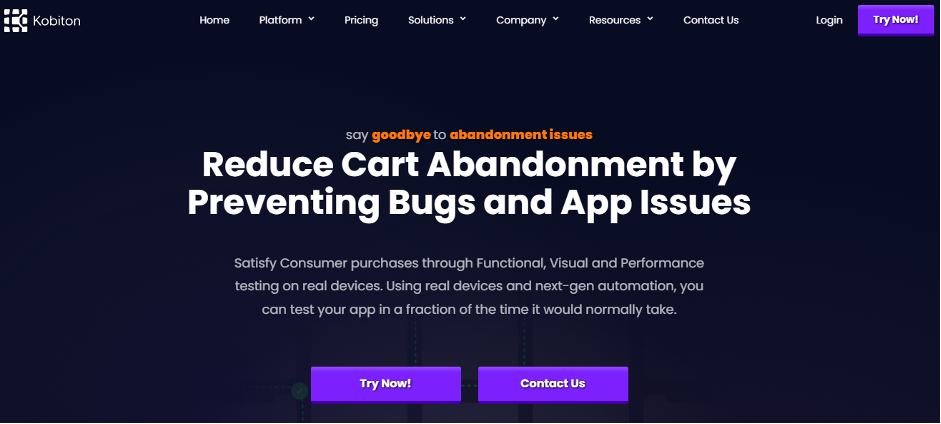
Kobiton is a cloud device lab that helps you test apps across more than 300 mobile devices from all major manufacturers, their OS variants, and browsers used by real users.
The need for testing apps on hundreds of device configurations has exploded due to the steady growth of Android usage. A typical hardware-layered approach enables a lengthy manual process to be used to create these different screen resolutions and form factors, as well as emulating each device’s unique characteristics.
Pros
- Deploy cloud, web, and SaaS
- Mac and Windows supported
Cons
- Linux not supported
- On-premise windows not available
- On-premise browser infrastructure not available
- Scriptless or Low code test case writing for Web Apps not available
7. Headspin
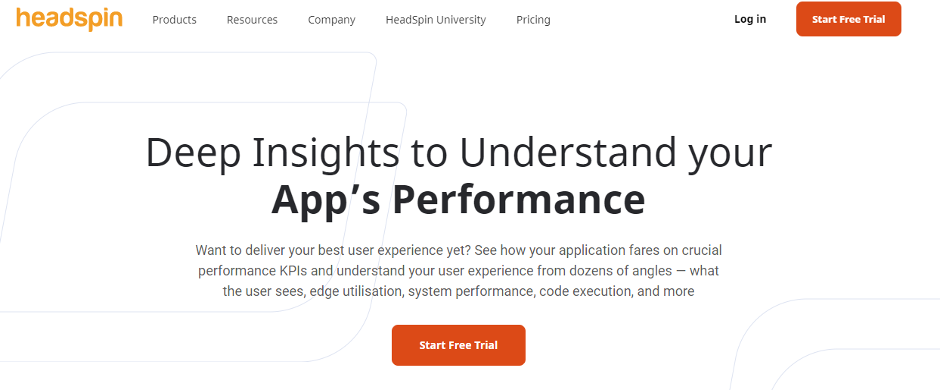
HeadSpin is an AI-driven enterprise platform for developers, testers, and DevOps engineers to remotely run cross-browser tests on thousands of real devices in IBM Cloud.
The platform lets users easily test their responsive or mobile app or website across real browsers and environments for 100% accurate results – even load testing.
Pros
- Allows hosting on device cloud
- On-premise device appliance available
- Experience and performance analytics are available
Cons
- No free trial available
- Does not provide any integration services
8. SeeTest

To debug your app in real-time, you need an eye for detail and a light touch of creativity. SeeTest helps to interact with any desktop or mobile browser – instantly, on the fly.
To see your work on the web, SeeTest captures all your tests as videos, complete with screen and camera recordings so you can see exactly how people use your app. Learn from every user – take total control of accurate reports with timed screenshots and coordinate logs, website activity, and video.
Pros
- Layout based testing is available
- GUI-based interface
- High reusability of tests and maintainability
Cons
- On-premise mobile-based cloud infrastructure not available
- On-premise browser cloud infrastructure not available
Comparison of The Best Cross
8 Best Cross Browser Testing Tools
| Perfecto Mobile | SeeTest | Kobiton | Browserstack | Sauce Labs | LambdaTest | TestGrid TestOS | ||
| Remote Infrastructure | ||||||||
| Mobile Cloud Infrastructure (Private) | Yes | Yes | Yes | Yes | Yes | Yes | Yes | |
| Mobile Cloud Infrastructure (On-Prem) | No | No | Yes | No | No | Yes | Yes | |
| Browser Cloud Infrastructure (Private) | No | No | No | Yes | Yes | Yes | Yes | |
| Browser Cloud Infrastructure (On-Prem) | No | No | No | No | No | Yes | Yes | |
| Automation Test Creation | ||||||||
| Scriptless or Low code test case writing for Mobile Apps | No | No | Yes | No | No | No | Yes | |
| Scriptless or Low code test case writing for Web Apps | No | No | No | No | No | No | Yes | |
| Open Source Based scriptless code behind | No | No | No | No | No | No | Yes | |
| Download code behind for Scriptless | No | No | No | No | No | No | Yes | |
| Web-Based API Testing | No | No | No | No | Yes | No | Yes | |
| Selenium Support(Web/Mobile) | No | No | No | Yes | Yes | Yes | Yes | |
| Appium Support (iOS/Android) | Yes | Yes | Yes | Yes | Yes | Yes | Yes | |
| XCUITest Support for iOS | Yes | No | Yes | No | Yes | No | Yes | |
| Parallel Test Execution (On Real Devices) | Yes | Yes | Yes | Yes | Yes | Yes | Yes | |
| Test Data Parameterization | No | No | No | No | Yes | No | Yes | |
| API Data + UI Assertions | No | No | No | No | No | No | Yes | |
| Test case Management Suite | No | No | No | No | Yes | Yes | Yes | |
| Test Case Auto Healing | No | No | No | No | No | No | Yes | |
| Functional/Manual Testing | ||||||||
| Functional/Manual Testing | Yes | Yes | Yes | Yes | Yes | Yes | Yes | |
| Network Level Testing | No | No | No | No | No | No | Yes | |
| Network Traffic Monitoring | No | No | No | No | Yes | No | Yes | |
| Performance Testing | ||||||||
| API Load Testing | No | No | No | No | No | No | Yes | |
| App Level Mobile Performance Testing – Manual | Yes | Yes | Yes | No | No | No | Yes | |
| App Level Mobile Performance Testing – Automated | No | No | No | No | No | No | Yes | |
| Web Single User Performance Metrics | No | No | No | No | No | No | Yes | |
| App Level API Performance Metrics | No | No | No | No | No | No | Yes | |
| Reporting | ||||||||
| Smart and Rich Data Insights | No | No | Yes | Yes | No | No | Yes | |
| Real-Time Visual Reporting | Yes | No | Yes | Yes | No | No | Yes | |
| Email Integrations | Yes | Yes | No | Yes | No | No | Yes | |
| Robotic Test Automation | ||||||||
| Robotic Arms To Test Hardware Integrations | No | No | No | No | No | No | Yes | |
| DevOps and Integration | ||||||||
| Continuous Integration PlugIns CircleCI, Travis, Jenkins, GitLab, BitBar, etc. | Yes | Yes | Yes | Yes | Yes | Yes | Yes | |
| Test Software Integrations JIRA, TestRail, MS TFS, etc | Yes | Yes | Yes | Yes | No | No | Yes | |
| Support | Monthly Free Support (Man Hours) | 0 | 0 | 0 | 40 | |||
| Support Type | Chat/Call 24X7/Email | |||||||
| Pricing | On avg. 200,000/yr (No behind the firewall infrastructuree/grid) | On avg. 200,000/yr | On avg. 200,000/yr | On avg. 200,000/yr | On avg. 200,000/yr | On avg. 200,000/yr | We only charge for infra and hosting costs and all the above-listed software comes free of charge. Our hosting cost starts at $/month. |
Conclusion
A cross-browser method is a way of accomplishing something on the web in more than one browser, probably because it’s very useful.
Most people probably use cross-browser compatibility because they want to make sure their site or link will work in multiple browsers.
While every other cross browsing tool mentioned above has its pros and cons, there has to be one that over-wins others. If you ask me in person, it was TestGrid for my case. Still, I’d recommend you to go through the comparison part in detail and make your own wise decision.